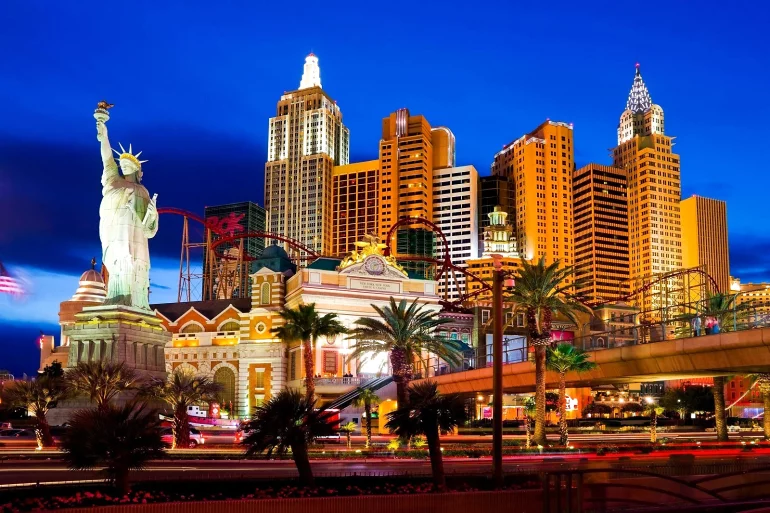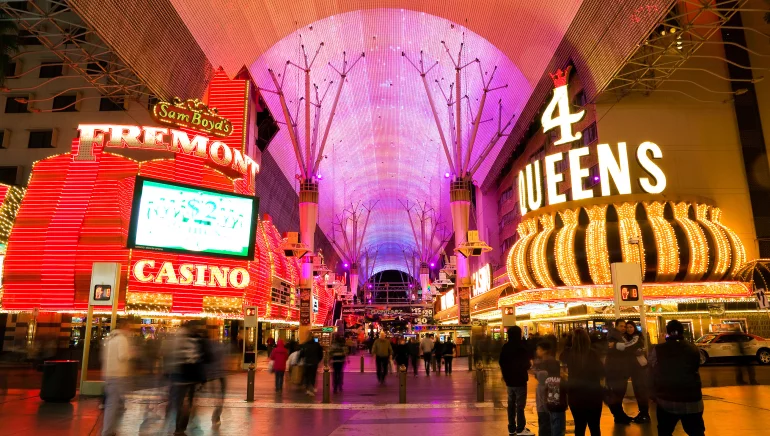
The U.S. gambling industry has experienced a seismic shift in recent years, transforming from a largely land-based operation into a dynamic digital powerhouse. This article explores the key events, legislative changes, and technological innovations that have propelled this industry into a new era of growth and accessibility.
By examining the period following a landmark Supreme Court decision, we can understand the forces that continue to shape the U.S. gambling sector and its future trajectory.
The Turning Point - A Day in May 2018
For decades, the U.S. gambling sector operated under a highly restrictive legal framework. Land-based casinos, primarily in Nevada and Atlantic City, dominated the market. Tribal gaming expanded across the country, but online wagering was severely limited. The Professional and Amateur Sports Protection Act (PASPA) of 1992 effectively banned sports betting in all but a few states, most notably Nevada. This created a fractured market where most sports wagers were placed illegally, out of state regulatory reach.
The Murphy v. NCAA Decision
The entire U.S. gambling industry was fundamentally altered on May 14, 2018. On that day, the Supreme Court struck down PASPA, declaring it unconstitutional. This historic ruling dismantled the federal ban on sports betting, clearing the way for individual states to legalize and regulate it as they saw fit. The decision was a catalyst, unleashing a wave of legislative action that would redefine the industry and create a massive new legal market for online sports betting and iGaming.

The Online Revolution
Following the Supreme Court's decision, states began a rapid race to legalize and launch sports betting.
New Jersey led the charge, becoming the first state to offer legal sports betting after the ruling.
Other states quickly followed, with many opting for a model that allowed for online sports betting, which proved to be a critical driver of market expansion.
The state-by-state legalization has created a diverse set of regulatory frameworks, with some states embracing open markets while others have adopted more restrictive policies. The rapid expansion of legal sports wagering across the nation is a defining feature of this period.
The Rise of iGaming
While sports betting garnered significant attention, the growth of online casino games, or iGaming, has been equally important. States like New Jersey, Pennsylvania, and Michigan have legalized and regulated online poker and casino games. This has provided a new revenue stream for state governments and gambling operators.
The iGaming market has shown consistent growth, attracting a different type of customer and expanding the overall digital gambling ecosystem alongside sports betting.
| Casino | Deposit methods | Withdrawal methods | Accepted currencies | |
|
+7
|
+6
|
$, €, ₽, ₴ | ||
|
+4
|
+3
|
$, €, ₽, KZT | ||
|
+6
|
+6
|
$, €, ₽, KZT, C$, kr, zł, ₴ | ||
|
+12
|
+11
|
$, €, ₽, C$, ¥, kr | ||
|
+9
|
+8
|
$, €, ₽ | ||
|
+9
|
+7
|
$, €, ₽ | ||
|
+12
|
+8
|
$, €, ₽, KZT, kr, zł | ||
|
+6
|
+5
|
$, €, ₽ | ||
|
+1
|
+1
|
$, €, ₽, KZT, kr, zł, ₴, YTL | ||
|
+6
|
+7
|
$, €, ₽, ₴ |
The Market Leaders
The post-PASPA era saw the emergence of new industry titans. Companies that had previously focused on Daily Fantasy Sports, such as FanDuel and DraftKings, quickly pivoted to become major players in the online sports betting and iGaming markets. They leveraged their existing customer bases and brand recognition to gain market share.
Established casino companies also entered the digital space, launching their own online platforms to compete in this new and competitive market.
Technology's Role in Transformation
Technology is at the heart of the gambling industry's recent transformation. The ubiquity of smartphones and the development of sophisticated mobile apps have made gambling more accessible than ever before. Users can now place bets, play casino games, and manage their accounts from anywhere within a legalized state. This mobile-first approach has been a key factor in the industry's explosive growth and has changed how people interact with gambling products.
Technological innovation has also created new types of gambling experiences. Live or in-play betting allows users to place wagers on events as they happen, with odds updating in real time. This dynamic form of betting has become a dominant force in the sports wagering sector, driving user engagement and offering a constant stream of betting opportunities during a single game or match.
The industry continues to adopt new technologies.
- Artificial intelligence and machine learning are being used to personalize user experiences and enhance security.
- Virtual and augmented reality are being explored to create immersive gambling environments.
Furthermore, blockchain technology and cryptocurrency are being considered for their potential to provide secure and transparent transactions, paving the way for future developments in the gambling sector.

The Economic and Social Scorecard
The legalization of gambling has created significant new revenue streams for states. Tax revenue from sports betting and iGaming has become a valuable source of funding for state budgets, often earmarked for education, infrastructure, and other public services. This new tax money provides a compelling economic argument for states considering the legalization of gambling and is a key benefit cited by proponents.
The economic impact of the legal gambling expansion is substantial. The industry has grown to be a multi-billion dollar enterprise, creating thousands of jobs in technology, marketing, and operations.
The flow of investment into new platforms and retail sportsbooks has boosted local economies and established new gambling hubs across the country. The U.S. has become one of the largest and most valuable gambling markets in the world.
While the economic benefits are clear, the expansion of gambling has also brought increased scrutiny on social challenges. Concerns about problem gambling have led to a greater focus on responsible gambling initiatives. Operators and regulators are now working to provide resources and tools to help consumers manage their gambling habits. This includes setting spending limits, offering self-exclusion programs, and promoting public awareness campaigns.
_770.webp)
Conclusion - A Look to the Future
The period following the Supreme Court's 2018 decision has been a truly transformative time for the U.S. gambling industry. The shift from a restricted, land-based model to a widespread digital enterprise has reshaped the entire sector. The industry is now defined by its accessibility, technological innovation, and a complex web of state-level regulations. This new era has unlocked immense economic potential but also created new challenges for regulators and consumers.
The story of U.S. gambling is still being written. The market is not yet fully mature, with many states still considering legalization. As more states enter the market, we can expect continued growth and competition. The future will likely involve more technological advancements, new forms of betting, and an ongoing conversation about responsible gambling. The great American gamble continues, with its outcome still unfolding.


















